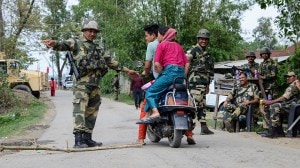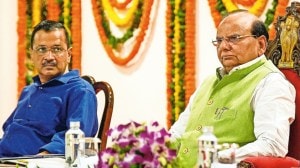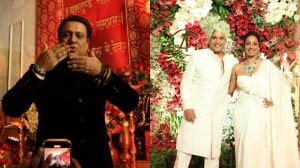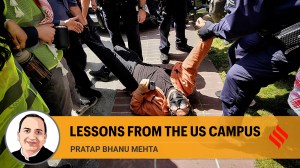- India
- International
‘Different cultures have derived different morals from Ramayana’
As a student, Richman had spent two years in Coimbatore and Madurai to learn Tamil language.
 Paula Richman in New Delhi on Monday.
Paula Richman in New Delhi on Monday.
Paula Richman, William H Danforth professor of South Asian Religions at Oberlin, Ohio, specialises in the study of Ramayana and Tamil. She spoke on Monday at Delhi-based South Asian University in a lecture titled ‘Crossing Boundaries — Narratives And Persons Who Travel’.
Richman’s 1991 book Many Ramayanas, a much celebrated volume, had to face criticism from Hindu activists for including, what they said, inappropriate interpretations of the holy text. The most controversial part of the book was an essay by historian A K Ramanujam titled Three Hundred Ramayanas, which detailed several interpretations of Ramayana. The essay was dropped from the undergraduate history syllabus of Delhi University in 2011 after protests from Hindu groups and a number of teachers.
In her lecture on Monday, Richman invoked all kinds of engagements across borders over the ages — involving merchants, indentured labour, the dollar diaspora, students and religious messengers. But, with felicity she spoke on stories travelling across borders over the centuries.
Speaking of the journey of a story or text across borders, she citied how Ramayana has taken “different forms, where stories are not only translated but retold, with each poet retelling it (bringing in) a local context”. She said in Indonesia “Ramayana and Mahabharata are mixed and even the characters from both meet each other”.
She said various cultures have emphasised different aspects of Ramayana and derived different “morals” from it. Richman recalled how a group of artistes from ASEAN countries discovered that the one story they all knew was that of Ramayana, on which they finally performed. It was just song and dance show, emphasising an unorthodox interpretation — what happens after Lord Ram becomes king of Ayodhya and the questions that confronted him on running the kingdom and tackling corruption.

On Jataka tales and Panchatantra stories, which have travelled to several countries and been adopted in various milieus, Richman cited a biography of Buddha, which tells about his yearning to tread the “middle path”, as being something that had also been interpreted by various cultures differently. “Buddhist struggle/dilemma and desire to know have been shared widely and meant different things to different cultures,” she said, emphasising the advantage stories sometimes have over people — of being able to slip across borders.
Richman also talked about different types of migrations and said it something that has been happening worldwide over several centuries. “We think of nations and the world as being bound by fixed boundaries. But, borders have shifted dramatically and even in recent years, the world looked very different, with different boundaries and names for places and parts of the world, and we must accept that it will continue to change.”
She said people from West Asia used to visit India’s coastal areas and they stayed here waiting for favourable winds to guide them home. Often, they settled down in Kerala and were “influential in creating new and specific cultures there,” she said.
As a student, Richman had spent two years in Coimbatore and Madurai to learn Tamil language.
Apr 27: Latest News
- 01
- 02
- 03
- 04
- 05































